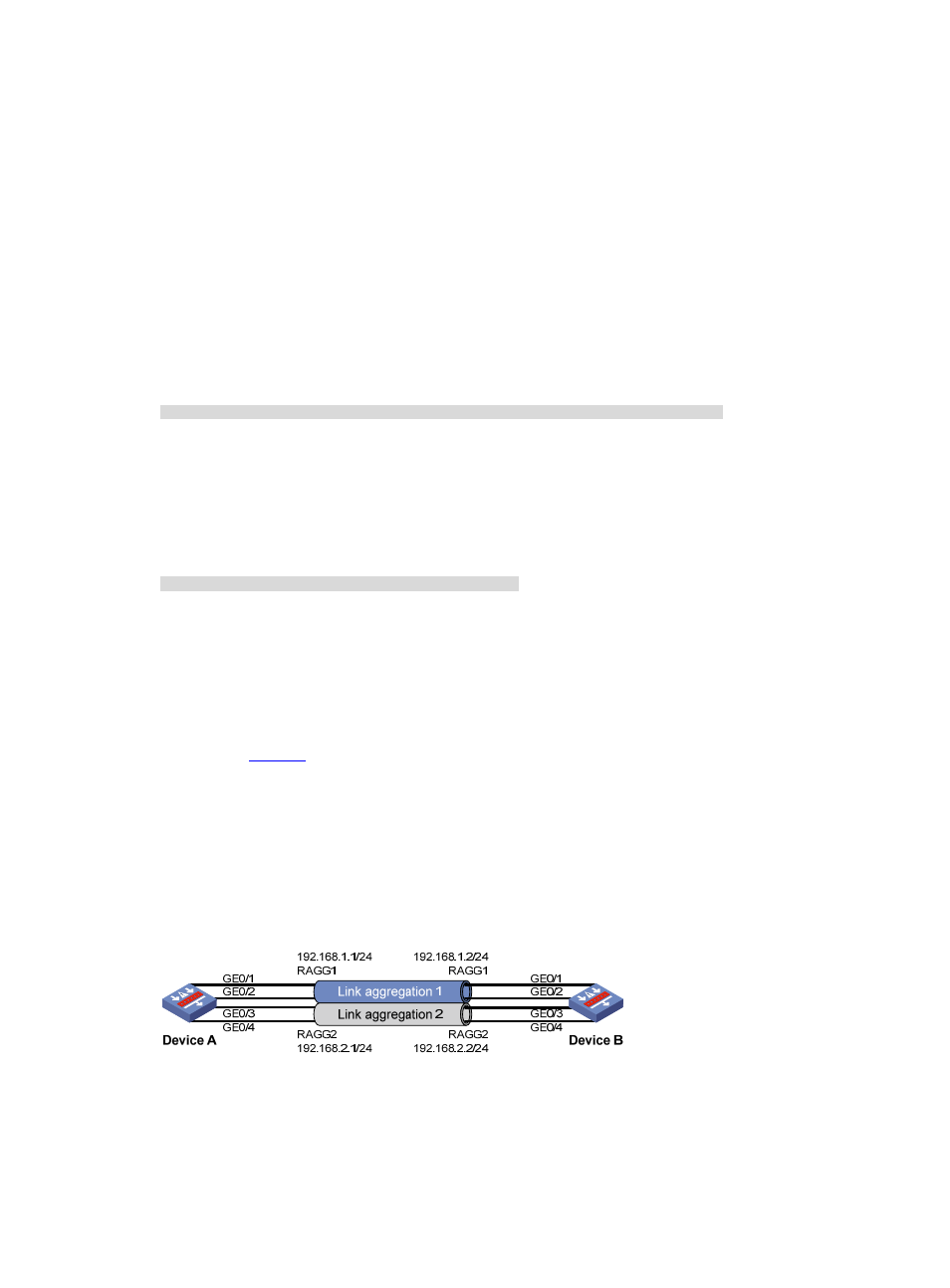Network requirements, Configuration procedure – H3C Technologies H3C SecPath F1000-E User Manual
Page 41

25
Step3
Verify the configurations
# Display summary information about all aggregation groups on Device A.
[DeviceA] display link-aggregation summary
Aggregation Interface Type:
BAGG -- Bridge-Aggregation, RAGG -- Route-Aggregation
Aggregation Mode: S -- Static, D -- Dynamic
Loadsharing Type: Shar -- Loadsharing, NonS -- Non-Loadsharing
Actor System ID: 0x8000, 000f-e2ff-0001
AGG AGG Partner ID Select Unselect Share
Interface Mode Ports Ports Type
-------------------------------------------------------------------------------
RAGG1 D 0x8000, 000f-e2ff-0002 3 0 Shar
The output shows that link aggregation group 1 is a load-shared Layer 3 dynamic aggregation group
and it contains three Selected ports.
# Display the global link-aggregation load sharing criteria on Device A.
[DeviceA] display link-aggregation load-sharing mode
Link-Aggregation Load-Sharing Mode:
destination-ip address, source-ip address
The output shows that the global link-aggregation load sharing criteria are the source and destination IP
addresses of packets.
Layer 3 Aggregation Load Sharing Configuration Example
Network requirements
As shown in
:
•
Device A and Device B are connected by their Layer 3 Ethernet interfaces GigabitEthernet 0/1
through GigabitEthernet 0/4.
•
Configure two Layer 3 static aggregation groups (1 and 2) on Device A and Device B respectively
and configure IP addresses and subnet masks for the corresponding Layer 3 aggregate interfaces.
•
Configure link aggregation group 1 to perform load sharing based on source IP address and link
aggregation group 2 to perform load sharing based on destination IP address.
Figure 9 Network diagram for Layer 3 aggregation load sharing configuration
Configuration procedure
Step1
Configure Device A
